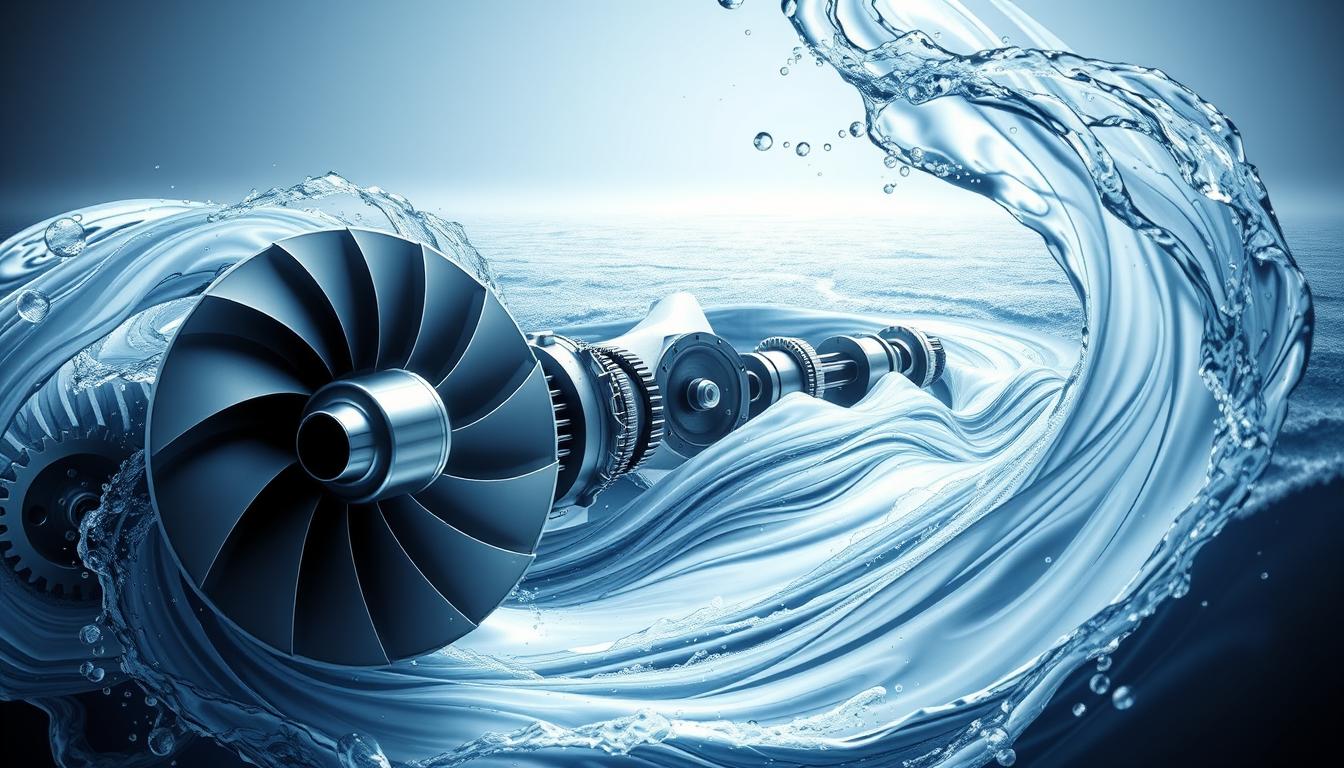In this article, I dive into the world of fluid mechanics and its key role in hydraulic machines. Fluid mechanics studies liquids and gases and the forces on them. It helps engineers make hydraulic machines that can lift, move, and change materials in many fields.
This journey shows how fluid dynamics shape the design and performance of hydraulic tech. It opens doors to new engineering possibilities.
Understanding Fluid Mechanics:
Fluid mechanics is the study of fluids and the forces on them. It looks at how liquids and gases act under different conditions. This field is split into two main areas: fluid statics and fluid dynamics.
Fluid statics deals with fluids that are not moving. It studies pressure and buoyancy. For example, it helps figure out water pressure in dams. On the other hand, fluid dynamics looks at moving fluids. It covers topics like viscosity and flow types.
When I study fluid properties, I learn how temperature, pressure, and material affect fluids. For example, viscosity changes with temperature, affecting pipe flow. This knowledge helps engineers and scientists create better systems.
The Principles of Fluid Dynamics:
Exploring fluid dynamics, I see how key Bernoulli’s Principle and the continuity equation are. Bernoulli’s Principle shows that as fluid speed goes up, pressure goes down. This is important in both air and water flow.
The continuity equation is another important idea. It says that mass doesn’t change in a closed system. This helps engineers design better systems for managing flow.
Lastly, the Navier-Stokes equations are essential for understanding fluid motion. These equations help predict how fluids behave under different forces. They’re used in many fields to make designs better.
Fluid Mechanics in Everyday Life:
Fluid mechanics is everywhere, yet often unnoticed. Think about turning on a faucet. The water flow shows us pressure and gravity at work. It helps us understand how fluids affect our daily lives.
Hydraulic systems are another area where fluid mechanics shines. In cars, hydraulic brakes use fluid to stop efficiently. This shows how important fluid mechanics is in engineering.
Fluid dynamics also shapes our weather. It affects how air masses move and create different weather patterns. Watching the weather, I see how fluid mechanics influences everything from storms to global climate.
Fluid Mechanics and Hydraulic Machines:
Fluid mechanics is key to how hydraulic machinery works. It lets hydraulic systems work with great precision and power. Machines like lifts, presses, and cranes show how hydraulics are used in many fields. Knowing how these systems work helps industries use hydraulics well.
The design and how hydraulic systems are used affect their efficiency. For example, a hydraulic press can work better and use less energy by applying pressure smartly. I’ve seen how companies that understand fluid mechanics make big improvements in hydraulic efficiency and reliability.
Understanding fluid dynamics helps us see the latest in hydraulic technology. New advancements in hydraulic systems make machines stronger and more reliable. Using fluid mechanics in designing hydraulic systems opens up many ways to improve operations in different industries.
Designing Hydraulic Machines:
In my work on hydraulic machine design, I focus on key engineering principles. Material selection is a big deal. It affects how well hydraulic parts last and work. The right materials help machines handle high pressure and tough conditions, making them last longer and work better.
I use computational fluid dynamics (CFD) to improve hydraulic designs. CFD lets me see how fluids move and spot problems early. This helps avoid costly changes later on, making designs better and faster.
CAD tools are vital in hydraulic design. They help me make accurate designs and improve them step by step. With CAD, I can easily change designs based on simulation results. This boosts innovation and efficiency in my projects.
Innovations in Fluid Mechanics:
Recent years have seen big steps forward in fluid mechanics, mainly in hydraulic technology. The rise of smart hydraulic systems is really exciting. These systems use sensors and automation to work better and save energy.
These changes are key as industries try to cut down waste and use resources wisely. It’s all about making things more efficient.
Also, the move towards environmentally friendly hydraulics is a big deal. These systems use new hydraulic fluids that are good for the planet but don’t lose performance. It shows that fluid mechanics is not just about new tech, but also caring for our environment.
Challenges in Fluid Mechanics and Hydraulics:
In the field of fluid mechanics and hydraulics, I face many challenges. Turbulence is a big issue. It causes pressure losses in hydraulic systems, affecting their efficiency.
Understanding fluid dynamics is key for engineers. They need to optimize their designs and processes.
Fluid mechanics also deals with predicting and managing fluid interactions. These interactions can get complex, like in systems with different fluid types or phases. Without good models, keeping hydraulic machinery stable and performing well is hard.
To tackle these challenges, we need ongoing research. Engineers must focus on better predictive models and new technologies. By using advanced tools and working together, we can make hydraulic systems more efficient and reliable.
The journey to overcome these challenges is ongoing. But the chance to improve performance makes it worth it.
